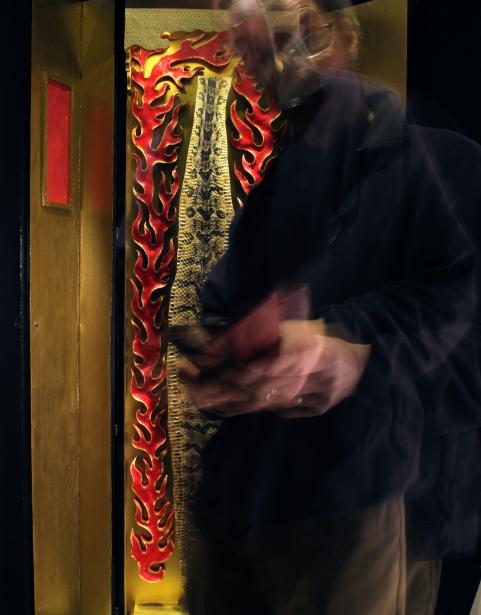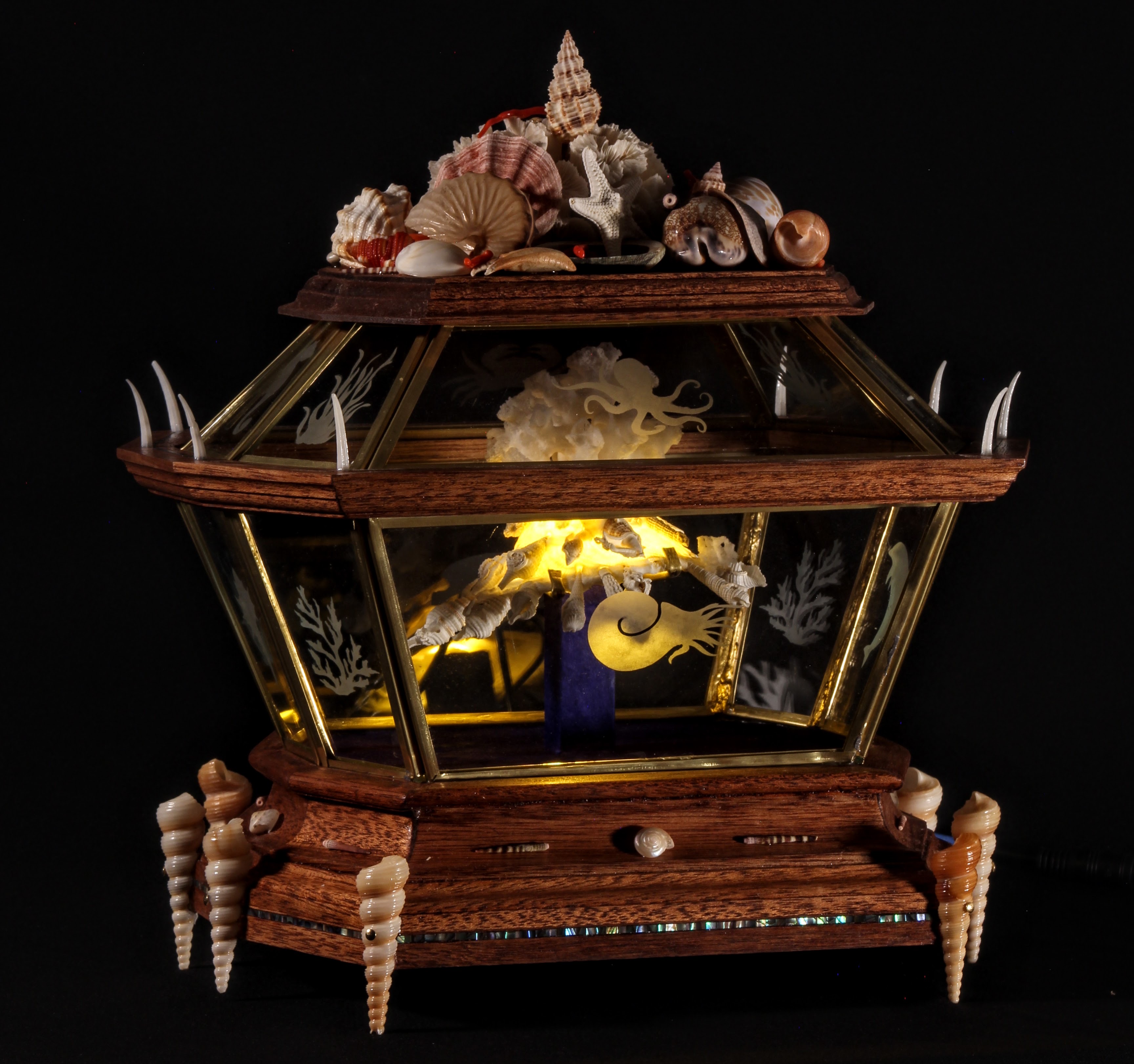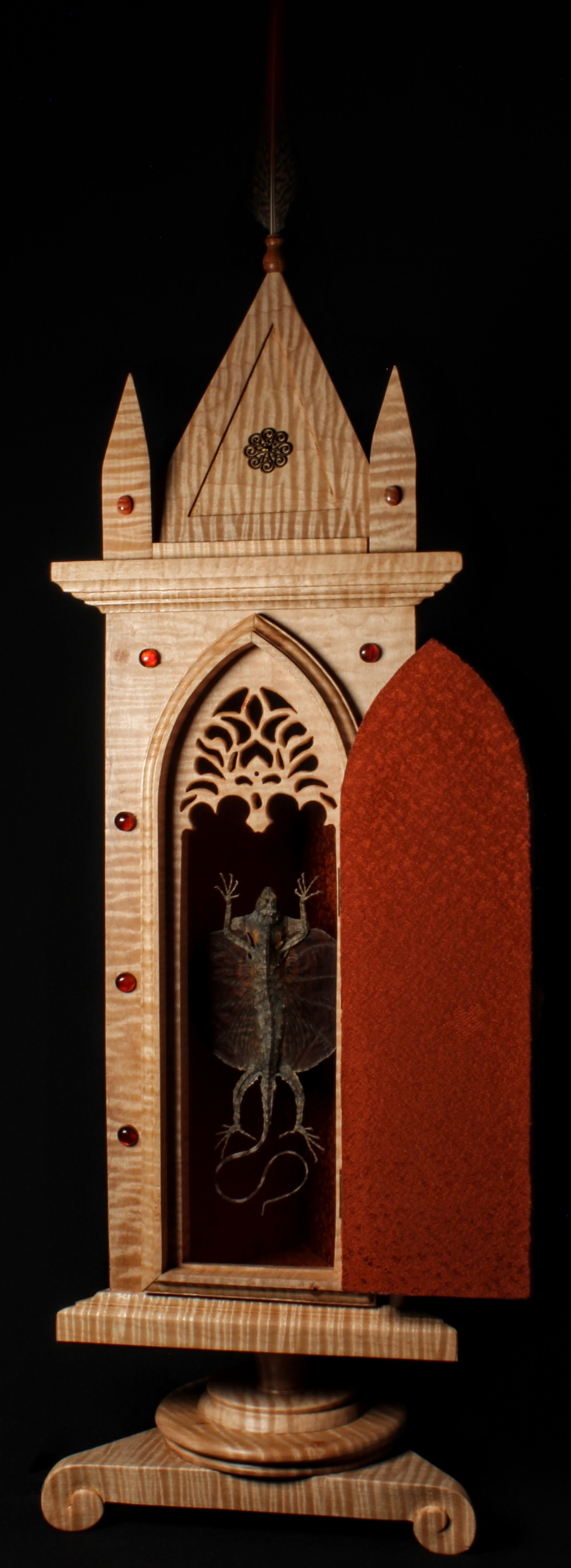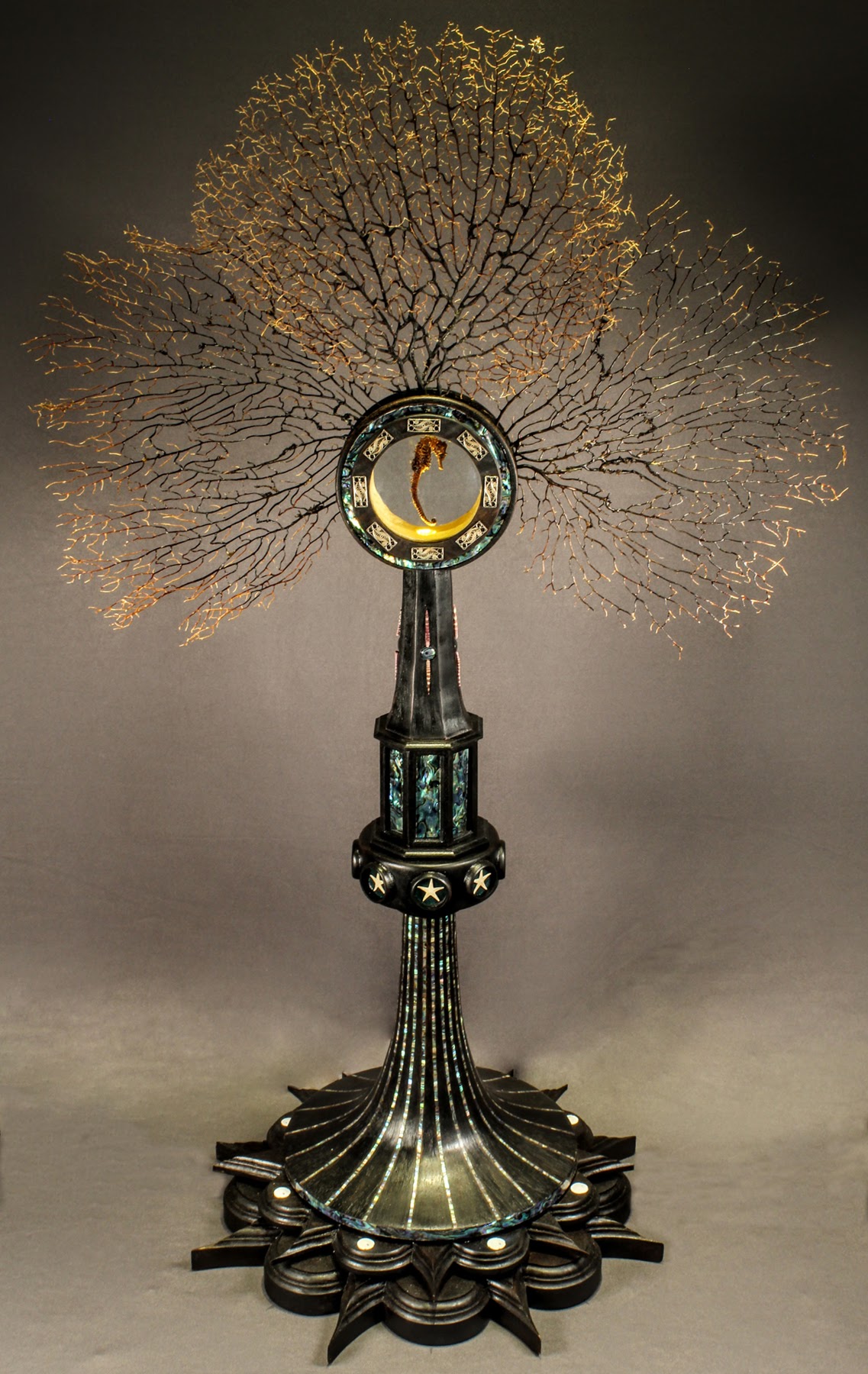Xenophora (Casket Reliquary) 2024
Mixed Media – African Mahogany, Carrier Shell, Brown Auger Turritella, Tusk Shells, Pearl Umbonium, Misc. Marine Specimens (Cowrie, Nautilus, Conch, Bivalve, Auger, Abalone, Murex, Limpet, Knobby Starfish, Mussel, Heart Cockle), Red Coral, Brain Coral, Dungeness Crab, Tiger Urchin Spines, Abalone Shell Inlay, Nepalese Lokta Paper, Etched Glass, and Brass
9” x 11” x 12”
Creating decorated containers to store and protect a precious or sacred object is an ancient practice, common to many cultures throughout the world. These 'caskets' take an infinite variety of forms...cylinders, boxes, pyxides, polygons. In many cases the contents are hidden beneath locked lids, but in the past, caskets containing a religious relic were often made with panels of decorated glass or rock crystal, allowing the viewer to see what lies within.
This piece was inspired by a baroque reliquary seen in an 18th-century basilica in Granada - an elaborately ornamented polygon casket containing the skeletal remains of a beloved saint. However, inside 'Xenophora' (from the Greek "bearing foreigners") lies not human remains, but a wondrous "carrier shell" mollusk specimen. Like Philipp Hainhofer's glorious wunderkammer built for King Gustave of Sweden, 'Xenophora' is topped with a ‘mountain’ of precious specimens...in the early 1600's, this mountain was where the objects thought to be of particular magical power were displayed.
Carrier shell mollusks display a unique adaptation - as they grow, they collect other shells, sponges, and stones from the sea floor and cement them to their exteriors, resulting over time in an extravagantly decorated 'hat'. Scientists have theorized that this may simply be an act of visual camouflage, or perhaps a technique to disguise a scent trail. But who's to say if this isn't perhaps an aesthetic act of beauty of a conscious organism?
As the concentration of carbon dioxide (CO2) in our atmosphere increases as a direct result of the combustion of fossil fuels, more CO2 is absorbed into ocean waters across the planet. This in turn drives an increase in the acidity of the water that is home to a vast collection of carbonate-shelled organisms, disrupting their growth and development. If humankind allows these global processes to advance unchecked, we may lose natural miracles like the carrier shell forever.
Draco (Triad Reliquary) 2024
Mixed Media – Tiger Maple, Pernambuco, Common Flying Dragon Lizard, Golden Pheasant Feather, Spindle Shell, Kangaroo Beetles, Red-Banded Agate, Amber, Japanese Kimono Silk, and Medallions
7” x 7” x 23”
A triad-cabinet reliquary, 'Draco' contains a common flying lizard specimen I found in a flea market in Paris one winter. With the thought that a changing climate might result in the disappearance of a being like this, I felt its value deserved to be elevated from trinket to more cherished symbol.
The evolutionary process of natural selection in ecosystems across the world, unfolding over millions of years, has produced an infinite variety of adaptations to life. In the case of this lizard, that means the ability to parachute from tree to tree on thin leathery "wings" (patagia), avoiding the danger of travel across a forest floor.
Lizards are "ectothermic" organisms...their body temperature relies on external sources. This makes lizards and other reptiles highly sensitive to the increases in temperatures that are unfolding in a wide variety of habitats across the planet.
So many reliquaries and altarpieces from across both hemispheres are really "microarchitecture" at heart - mimicking the essential features of full-scale shrines and cathedrals. The tall spires, arches and pierced carvings of 'Draco' perhaps echo features seen on towering gothic churches of 14th-century France.
Hippocampe (Monstrance) 2024
Mixed Media – Ebonized Black and Claro Walnut, Seahorse, Black Sea-Fan Coral, Abalone Shell Inlay and Cabochons, Starfish, Tiger Sea Urchin Spines, Sand Dollars, Antique Filigree Sterling Silver, and Belgian Silk
14” x 19” x 30”
Seahorses, with their remarkable curled prehensile tails and equine features, are actually small bony-armored fish. Beloved creatures for their magical appearance, they belong to the genus Hippocampus; from Ancient Greek, hippos meaning "horse", kampos meaning "sea monster". Fossil records of seahorses date back as far as 13 million years ago. Seahorses have a unique evolutionary adaptation - it is the male that carries the young during pregnancy.
The shallow salt water ecosystems across the world that make up the primary habitats for seahorses (sea grass beds, estuaries, mangroves, and coral reefs) are particularly sensitive to the changes in sea level, pH, and water temperature associated with global climate change. Coupled with other human-related stresses on coastal environments, the long-term future for these delicate creatures remains an ongoing concern. Many species of seahorses are already in decline.
The 'monstrance' made to shelter this seahorse echoes the traditional display vessels often seen in a prominent position on the altar of a Catholic, Lutheran, or Anglican church. Enclosing a venerated object behind rock crystal lenses, the breathtaking monstrances created by artisans from the Renaissance were the height of the goldsmith's craft - richly adorned with gold, silver, ebony, precious gems, and enamel. The stylized sun rays surrounding the central niche of "solar" monstrances are thought to represent a "divine light" illuminating and radiating from the object within the chamber.




